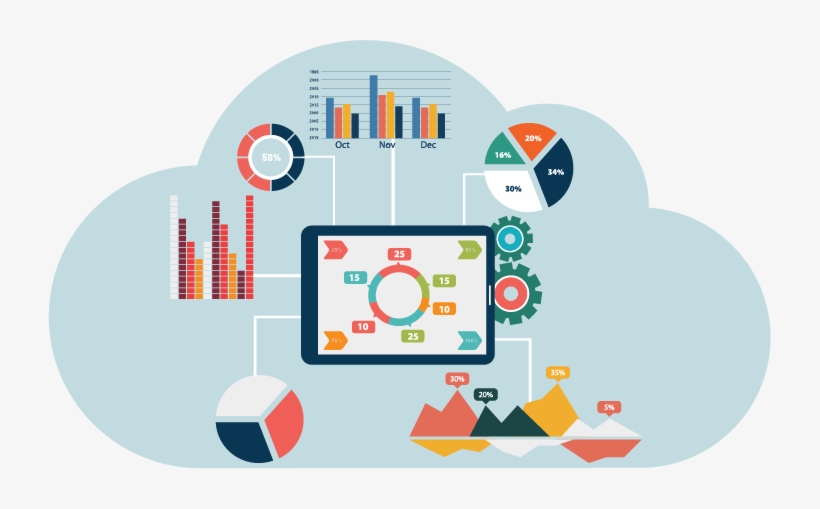Why Do Data Analytics Initiatives Still Fail?

Strong data analytics is a digital business imperative — and it all begins with data governance, the right strategy and an emphasis on data-conscious culture.
Data and analytics remain top priorities for organizations in the digital era, with 37 percent of IT leaders saying that data analytics will drive the biggest chunk of their IT investments this year, ahead of security and risk management, according to CIO.com’s 2020 State of the CIO survey.
And with that level of spending going toward analytics, the pressure is on to deliver results. Yet experts in this space say CIOs and their executive colleagues are falling short. “There are challenges in getting these initiatives across the goal line,” says Brad Fisher, a partner and the U.S. leader for data and analytics at KPMG.
Following are four key areas that are hindering analytics success:
Why Do Data Analytics Initiatives Still Fail?
1. Poor Data Foundations
Statistics from research and advisory firm Gartner confirm that most organizations believe data is critical, with nearly 80 percent of executives stating in a 2019 survey that their companies will lose competitive advantage if they don’t effectively use data. Yet Gartner also found that more than half of organizations don’t have a formal data governance framework and a dedicated budget.
The lack of such foundational elements can stymie organizational ambitions.
“You need to be very intentional. And if you’re not being intentional, you might not see value,” says Roy Singh, a partner at Bain & Co. and a member of the firm’s Advanced Analytics and Enterprise Technology practices.
Without a fully implemented data governance program, organizations can’t expect to have sound data hygiene practices in place. They can’t access or integrate the data they have, as it remains locked away in departmental siloes. They might not even know what data they need to be effective.
“They have islands of information, and they have parts of their companies doing some of the same types of things. Others have missed the mark because they have dirty data or they’re grabbing the wrong data sets or feeding it to their dashboards incorrectly,” says Edward Matthews, an instructor at Boston University’s Metropolitan College and a senior IT security engineer at Partners HealthCare. “These companies think they have decent programs until they look at frameworks and they realize they don’t.”
Moreover, many organizations don’t have the right foundational technologies to enable their objectives, as they chase tools that might promise big dividends yet aren’t good fits for their own needs, Matthews says. Or, conversely, they stick with tools that don’t enable growth because they didn’t devise a solid strategy from the start.
By creating a strategy for their data programs—or, better still, a center of excellence—IT leaders can address the foundational pieces needed for success, including data governance, accountability, ownership of the various data program components, needed infrastructure, training requirements, strategic objectives and leadership.
Matthews points to the approach taken by a charity he once worked for as a good example. The organization committed to appropriately funding its analytics program, created an analytics team and assigned a senior vice president to lead it.
“They were ahead of the curve, constantly researching what capabilities were out there, providing information to the company, which demonstrated their worth. The team grew and adapted; they didn’t lock into particular data sets and ignore other data but were constantly thinking of new ways to check their data, and they were always considering new technologies,” Matthews says. “In this case, the CIO had the foresight to get the team created and hire the right person to lead the team.”
Read more: 10 Commandments of Data Science Project Execution
2. The Wrong Strategy
On the other hand, organizations shouldn’t view analytics as a monolithic undertaking, either. Experienced analytics leaders say they’ve seen CIOs go big all at once—building data lakes and implementing high-priced infrastructure, for example—to jump-start analytics projects. They deliver their projects but then find the technology is underutilized or ignored.
Like any other tech-driven proposition, it’s better to implement targeted solutions that can demonstrate value to the users. “Make sure you’re solving business problems,” says Dinanath (Dina) Kholkar, vice president and global head of the business process services and analytics units at Tata Consultancy Services.
Kholkar started his own firm’s data journey by targeting an area where a data project would deliver value and then moved to implement it. This approach allowed the team to clearly define objectives as well as identify the data and tools needed to meet them. In other words, this approach created manageable, achievable goals capable of generating measurable value. “That then could become a showcase for the rest of the organization,” Kholkar says.
“[The business units] want to see results. They don’t have the patience to wait for large transformational projects,” he adds. “And they’re OK not getting 100 percent results. If they’re getting 60 to 70 percent of outcomes to start, they’re OK, and then they can get incremental improvements from there. Because when you deliver outcomes, it gets easier to get the next wave of investments. That’s very important to keep in mind.”
Similarly, experts advise CIOs to bring an iterative approach to their analytics program rather than going in with a big bang tech project.
“It needs to be an interactive and experimental exercise where IT, business and data all work together in an agile mode, where there’s high-velocity interaction between those three groups, where they’re able to run experiments and test hypotheses,” Singh says.
Brian Hopkins, vice president and principal analyst at Forrester Research, points to a retailer that created a three-year data strategy built on adding investments every year rather than leaping into the program with a single upfront investment—an approach that recognized the need to continually add and improve.
“[This company] discovered that, like digital, once you start on an analytics program you shouldn’t stop. You invest every year in advancing your data strategy,” Hopkins adds.
Moreover, these iterative investments need to be driven by evolving business needs—and not by new technology capabilities as they come onto the market. Organizations should build analytics capabilities business case by business case, incrementally expanding their data program by adopting more advanced tools and enabling more users to tackle increasingly complex problems.
“The CIO needs to think of it as an iteration, in fact, many iterations. They’re going to have to continually check [their data program] against the market and what their company is trying to accomplish, try new tools in parallel to what they’re using to test them out and then to be able to jump into a new tool if they think it can provide new information,” Matthews says.
3. Failure to Balance Freedom and Control
Despite big investments in analytics initiatives, executives say they’re still falling short in reaping benefits. In its Big Data and AI Executive Survey 2020, NewVantage Partners found that 74 percent of the 70 companies polled see business adoption of big data as a continuing struggle.
Failure to recognize and respect different user needs is one factor driving that high figure, according to Singh, who sees some data leaders allowing every business unit within their organizations to pursue its own data strategy without establishing organization-wide standards—an approach that creates inefficiencies and leaves many user groups floundering without any support.
Other organizations go to the opposite extreme by centralizing everything, which prevents savvy business users from scaling up quickly and the organization as a whole from reaching the program’s full potential, Singh says.
But IT leaders who recognize the need to create an analytics program balanced between those two extremes—and that can adjust to users’ differing needs within their organization—are the most successful, Singh explains.
“You need a hybrid of being completely centralized and completely decentralized, and the balance between the two will change over time, maybe starting more centralized at first,” he adds.
Singh points to the approach taken by one particular utility company. As its leaders invested in analytics capabilities, they recognized that the energy trading group had extensive experience with data science, so they built a self-service platform that adhered to the organization’s data governance standards and technology requirements. But they also recognized its safety division was less experienced with analytics, so they crafted a strategy for those users that featured more centralized support.
4. Shortchanging The Need for Culture Change
Still, executives need to devise more than just a holistic data program that’s aligned with strategic goals. They also need to change the culture of their organizations so that users embrace the use of real-time data-driven insights and actually view engagement with data as the norm.
“This is a shift in the entire business paradigm, and organizations need to plan for that change,” says Tata Consultancy’s Kholkar.
Most organizations aren’t doing that. According to the NewVantage Partners report, only 38 percent of surveyed companies have created a data-driven organization and only 27 percent believe they’ve built a data culture within their firms. Further, 91 percent said people and process challenges are their biggest barriers to becoming a data-driven organization.
Nassar Nizami, executive vice president and CIO at Thomas Jefferson University and Jefferson Health in Philadelphia, has been maturing the data program at his institution by addressing technology needs, such as standardizing data and analytics tools and managing the data warehouse, and aligning the data program’s priorities with the organization’s overall strategy.
But he went further, driving the required cultural shifts in part through the creation of a training program called Jefferson Analytics Community (JAC). Its tagline is, “Trouble getting data? You don’t know JAC.”
“In creating JAC, our vision was to create a federated model of governed self-service analytics driven by operational owners,” Nizami says. He adds that the objectives were to increase user adoption of analytics tools, transition from a “data-rich” organization to a data-driven one and promote self-service data—goals meant to increase productivity and decrease turnaround time.
Fisher says other CIOs and their executive partners need to follow suit by moving their analytics program from “a great standalone effort that generates insights” into something that’s integrated in processes so that users see it as business as usual.
“Users don’t know or care what all the data sources are or how cool the data science is,” Fisher says. They need to walk into their office or punch it into their phone and get the information they need to do their job. So it needs to look and feel like an application. That is something that the CIO uniquely understands.”






